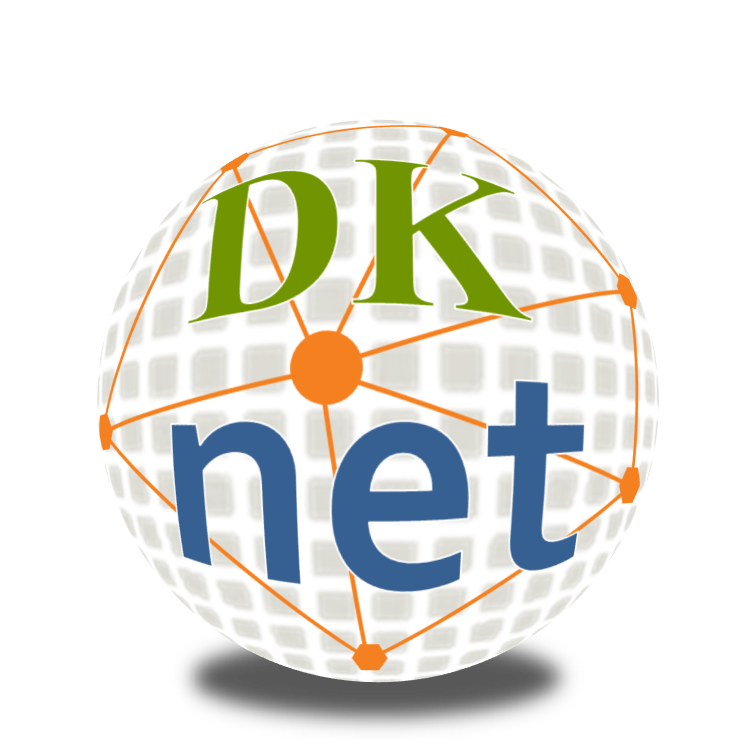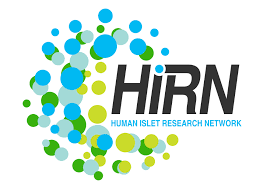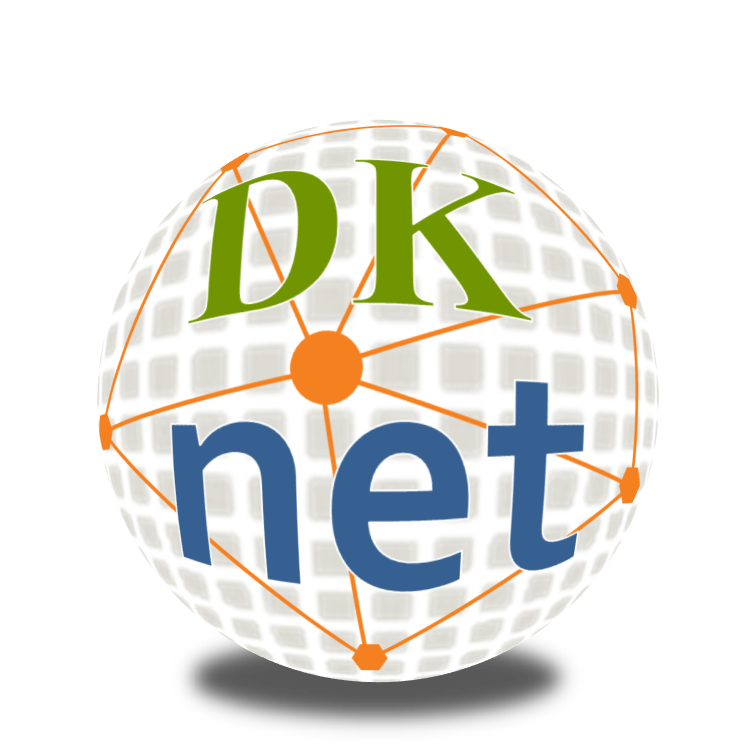Leaving Community
Are you sure you want to leave this community? Leaving the community will revoke any permissions you have been granted in this community.

AddGene: Plasmids
Used in
Addgene is a repository of published plasmids for use in research.

AntibodyRegistry: Antibodies
Used in
The Antibody Registry is the authoritative source for antibody identifiers, which can be used in publications to uniquely mark the antibodies used in a paper.
BCBC: Adenovirus
Used in
The BCBC Adenovirus Collection is a repository of replication-deficient recombinant adenoviruses. As of August 1, 2015, BCBC is no longer in service.
BCBC: Antibodies
Used in
The Beta Cell Biology Consortium provides a list of antibodies useful to the study of pancreatic islet development and function. As of August 1, 2015, BCBC is no longer in service.
BCBC: Cell Line
Used in
The BCBC Cell Line Collection is a repository of mouse embryonic stem cell lines for the study of diabetes. As of August 1, 2015, BCBC is no longer in service.
BCBC: Mouse
Used in
The BCBC Mouse Collection provides for the collection and sharing of annotated information on genetically modified mouse strains that are useful for beta cell and/or pancreatic development research. As of August 1, 2015, BCBC is no longer in service.
BCBC: Protocols
Used in
BCBC Protocols are related to primary cell culture, immunostaining, ESC differentiation, cell sorting, and RNA purification. As of August 1, 2015, BCBC is no longer in service.

Cellosaurus: Cell Lines
Used in
Cellosaurus is database indexing available cell lines from various collections: American Type Culture Collection (ATCC), Bioresource Collection and Research Center, Taiwan (BCRC), Banco de Células do Rio de Janeiro (BCRJ), CellBank Australia (CBA), Collection of Cell Lines in Veterinary Medicine (CCLV), Cell Lines Service (CLS), Coriell, Drosophila Genomics Resource Center (DGRC), Deutsche Sammlung von Mikroorganismen und Zellkulturen GmbH (DSMZ), European Bank for induced pluripotent Stem Cells (EBiSC), European Collection of Authenticated Cell Cultures (ECACC), Interlab Cell Line Collection (ICLC), Institute for Fermentation Osaka (IFO), Istituto Zooprofilattico Sperimentale della Lombardia e dell'Emilia Romagna (IZSLER) biobank, Japanese Collection of Research Bioresources (JCRB) Cell Bank, Kunming Cell Bank of Type Culture Collection (KCB), Korean Cell Line Bank (KCLB), Millipore, National Cell Bank of Iran (NCBI_Iran), National Cancer Institute - Developmental Therapeutics Program (NCI-DTP), NINDS Human Cell and Data Repository (NHCDR), NIH AIDS Reagent Program (NIH-ARP), NISES, RIKEN Bioresource Center Cell Bank (RCB), Royan Stem Cell Bank (RSCB), Tick Cell Biobank (TCB), Tohoku University cell line catalog (TKG), and Ximbio.

ClinicalTrials.gov: Trial List
Used in
ClinicalTrials.gov is a registry of clinical studies conducted primarily within the United States.
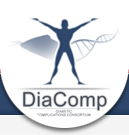
Diabetic Complications Consortium: Animals
Used in
Diabetic Complications Consortium provides data and information relevant to diabetes.

Diabetic Complications Consortium: Histology
Used in
Diabetic Complications Consortium contains sets of histology images.

Diabetic Complications Consortium: Protocols
Used in
Diabetic Complications Consortium provides provides a list of protocols used by DiaComp.

GUDMAP: Expression
Used in
GUDMAP, GenitoUrinary Molecular Anatomy Project, aggregates and provides experimental gene expression data from the genito-urinary system. GUDMAP upgraded their website infrastructure and has integrated their resources with the (Re)BuildingaKidney consortium. For most current data, please visit GUDMAP.org.

GUDMAP: Image
Used in
GUDMAP, GenitoUrinary Development Molecular Anatomy Project, aggregates and provides images of experimental gene expression data from the mouse genitourinary system. The image links to the image set, where individual images can be downloaded. GUDMAP upgraded their website infrastructure and has integrated their resources with the (Re)BuildingaKidney consortium. For most current data, please visit GUDMAP.org.

GUDMAP: Protocols
Used in
GUDMAP Protocols provides experimental protocols and standard specifications by a variety of groups from the GenitoUrinary Development Molecular Anatomy Project (GUDMAP). GUDMAP upgraded their website infrastructure and has integrated their resources with the (Re)BuildingaKidney consortium. For most current data, please visit GUDMAP: protocols.

Grants.gov: Opportunity
Used in
Grants.gov provides information on over 1,000 grant programs open for application.

HIRN: Antibodies
Used in
The Human Islet Research Network (HIRN) helps to organize and support collaborative research related to the loss of functional beta cell mass in Type 1 Diabetes. The antibodies view is a list of antibodies used by HIRN researchers. The "Antibody Name" column links to the HIRN individual antibody pages, and the "Research Resource Identifier" column links to Antibody Registry portal, where more updated information may be found.

HIRN: Cell Lines
Used in
The Human Islet Research Network (HIRN) helps to organize and support collaborative research related to the loss of functional beta cell mass in Type 1 Diabetes. The cell line view is a list of cell lines used by HIRN researchers. The "Cell Line Name" column links to information about individual cell lines.

HIRN: Constructs
Used in
The Human Islet Research Network (HIRN) helps to organize and support collaborative research related to the loss of functional beta cell mass in Type 1 Diabetes. The constructs view is a list of constructs used by HIRN researchers. The "Name" column links to the HIRN individual construct pages.

HIRN: Datasets
Used in
The Human Islet Research Network (HIRN) helps to organize and support collaborative research related to the loss of functional beta cell mass in Type 1 Diabetes. The datasets view is a list of datasets used by HIRN researchers. The "Name" column links to the HIRN individual dataset pages.

HIRN: Model Organism
Used in
The Human Islet Research Network (HIRN) helps to organize and support collaborative research related to the loss of functional beta cell mass in Type 1 Diabetes. The model organism view is a list of model organisms used by HIRN researchers. The "Name" column links to the HIRN individual model organism pages, and the "Research Resource Identifier" column links to individual resource page from its repository, where more information can be found.

HIRN: Protocols
Used in
The Human Islet Research Network (HIRN) helps to organize and support collaborative research related to the loss of functional beta cell mass in Type 1 Diabetes. The protocols view is a list of protocols used by HIRN researchers. The "Name" column links to the HIRN individual protocol pages, and the "Protocols.io" column links to protocols.io, where detailed information may be found.

ISCC: Antibodies
Used in
The ISCC Antibody Collection is a repository of antibodies relevant to intestinal epithelial stem cell biology.

ISCC: Protocol
Used in
The ISCC Protocol Library contains protocols relevant to intestinal stem cell biology.

Integrated: Animals
Used in
Integrated Animals is a virtual database currently indexing available animal strains and mutants from: AGSC (Ambystoma), BCBC (mice), BDSC (flies), European Xenopus Resource Center (frog), The National Xenopus Resource (frog), Xenopus Express (frog), CWRU Cystic Fibrosis Mouse Models (mice), DGGR (flies), FlyBase (flies), IMSR (mice), MGI (mice), MMRRC (mice), NSRRC (pig), RGD (rats), Sperm Stem Cell Libraries for Biological Research (rats), Tetrahymena Stock Center (Tetrahymena), WormBase (worms), XGSC (Xiphophorus), ZFIN (zebrafish), and ZIRC (zebrafish). Note, the IMSR data is linked, but users may need to re-execute the search if the top mouse is not returned properly.
Note: BCBC is no longer in service, so the links may not be functional.

LIPID MAPS Proteome Database: Gene
Used in
The LIPID MAPS Proteome Database (LMPD) provides information on gene and proteins associated with lipids.

LIPID MAPS Structure Database: Compounds
Used in
The LIPID MAPS Structure Database (LMSD) provides structural data and annotations of biologically relevant lipids.

MMPC: Protocols
Used in
National Mouse Metabolic Phenotyping Centers provides the protocols used by MMPC for mouse models of diabetes.

MMPC: Resources
Used in
National Mouse Metabolic Phenotyping Centers provide information and data about mouse models of diabetes.

NCBI BioSample: BioSample
Used in
The NCBI BioSample provides descriptions of biological source materials used in experimental assays.

NIDDK Central Repository: Data
Used in
An archive of clinical data and documentation from NIDDK-sponsored studies.

NURSA: Animal Models
Used in
NURSA Animal Models has a list of animals models from NURSA. As of March 20, 2020, NURSA is succeeded by the Signaling Pathways Project (SPP). All NURSA-biocurated transcriptomic datasets have been preserved for data mining in SPP. All non-transcriptomic dataset NURSA content will be transferred to dkNET, with whom we are evaluating options for archiving this content.

NURSA: Antibodies
Used in
NURSA Antibody a list of the antibodies used in generating NURSA datasets. As of March 20, 2020, NURSA is succeeded by the Signaling Pathways Project (SPP). All NURSA-biocurated transcriptomic datasets have been preserved for data mining in SPP. All non-transcriptomic dataset NURSA content will be transferred to dkNET, with whom we are evaluating options for archiving this content.

NURSA: Cell Lines
Used in
Nuclear Receptor Signaling Atlas provides access to data related to nuclear receptors and nuclear receptor coregulators. As of March 20, 2020, NURSA is succeeded by the Signaling Pathways Project (SPP). All NURSA-biocurated transcriptomic datasets have been preserved for data mining in SPP. All non-transcriptomic dataset NURSA content will be transferred to dkNET, with whom we are evaluating options for archiving this content.

NURSA: Datasets
Used in
NURSA Datasets contains data related to nuclear receptors and nuclear receptor coregulators. As of March 20, 2020, NURSA is succeeded by the Signaling Pathways Project (SPP). All NURSA-biocurated transcriptomic datasets have been preserved for data mining in SPP. All non-transcriptomic dataset NURSA content will be transferred to dkNET, with whom we are evaluating options for archiving this content.

NURSA: Molecules
Used in
Curated information on nuclear receptors, ligands and co-regulators from the Nuclear Receptor Signaling Atlas (NURSA). As of March 20, 2020, NURSA is succeeded by the Signaling Pathways Project (SPP). All NURSA-biocurated transcriptomic datasets have been preserved for data mining in SPP. All non-transcriptomic dataset NURSA content will be transferred to dkNET, with whom we are evaluating options for archiving this content.

NURSA: PCR Primer
Used in
NURSA PCR Primers contain primer sequences to amplify nuclear receptors. As of March 20, 2020, NURSA is succeeded by the Signaling Pathways Project (SPP). All NURSA-biocurated transcriptomic datasets have been preserved for data mining in SPP. All non-transcriptomic dataset NURSA content will be transferred to dkNET, with whom we are evaluating options for archiving this content.

Omics Discovery Index: Datasets
Used in
The Omics Discovery Index (OmicsDI) is a portal that facilitates discovery and access of omics datasets by aggregating metadata across a group of transcriptomics, genomics, proteomics and metabolomics resources.

RePORTER: CurrentNIHGrants
Used in
NIH RePORTER provides a list of funded grants across NIH institutes.
SciCrunch Registry is a curated repository of scientific resources, with a focus on biomedical resources, including tools, databases, and core facilities - visit SciCrunch to register your resource.

T1DBase: Human GRCh37 Variants
Used in
T1DBase provides information on human type 1 diabetes loci based on genome build GRCh37. Note: In October 2016, T1DBase merged with ImmunoBase. In 2020, ImmunoBase ownership has been transferred to Open Targets. Results for ImmunoBase studies can be explored using Open Targets Genetics.

T1DBase: Human GRCh38 Variants
Used in
T1DBase provides information on human type 1 diabetes loci based on genome build GRCh38. Note: In October 2016, T1DBase merged with ImmunoBase. In 2020, ImmunoBase ownership has been transferred to Open Targets. Results for ImmunoBase studies can be explored using Open Targets Genetics.

T1DBase: Human NCBI 36 Variants
Used in
T1DBase provides information on human type 1 diabetes loci based on genome build NCBI 36. Note: In October 2016, T1DBase merged with ImmunoBase. In 2020, ImmunoBase ownership has been transferred to Open Targets. Results for ImmunoBase studies can be explored using Open Targets Genetics.

dkNET Pilot Funding News: List
Used in
NIDDK Information Network (dkNET) curated a list of community-based funding opportunities provided by projects or organizations other than government granting agencies (such as NIH or NSF), e.g., pilot projects, training opportunities.

 22 records
22 records
1000 Functional Connectomes Project is a fully open downloadable database of 1200 resting state fMRI datasets collected from 33 sites around the world.

 2,918 records
2,918 records
Allen Brain Atlas: Connectivity Study provides high-resolution maps of neural connectivity in the mouse brain.

 330,762 records
330,762 records
The Allen Mouse Brain Atlas provides a genome-wide database of gene expression in the mouse brain.

 2,436 records
2,436 records
The cell type view provides a database of neuronal cell types based on multimodal characterization of single cells to enable data-driven approaches to classification. For more details about the experiments, please refer to the technical white paper.

 702 records
702 records
The cell type view provides a database of neuronal cell types based on multimodal characterization of single cells to enable data-driven approaches to classification. For more details about the experiments, please refer to the technical white paper.
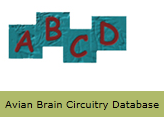
 332 records
332 records
The Avian Brain Circuitry Database (ABCD) provides anatomical and connectivity data of the avian brain. ABCD is no longer in service.

AddGene: Plasmids
Used in
 108,728 records
108,728 records
Addgene is a repository of published plasmids for use in research.

 381 records
381 records
The Aging Genes and Interventions Database provides data from conclusive investigations connecting genes with aging-related phenotypes.

 155 records
155 records
The Aging Genes and Interventions Database provides data from conclusive investigations connecting interventions with aging-related phenotypes.

 4,219 records
4,219 records
The Animal Aging and Longevity Database includes extensive longevity records and complementary traits for > 4000 vertebrate species. Data quality can be judged by looking at the sample size column and the original references, the last two columns.

 178,491 records
178,491 records
Animal Quantitative Trait Loci Database collects and provides publicly available trait mapping data, i.e. QTL (phenotype/expression, eQTL), candidate gene and association data (GWAS), and copy number variations (CNV) mapped to livestock animal genomes to facilitate locating and comparing discoveries within and between species. Additional information regarding QTL data can be found at the Animal QTL Database FAQ.

AntibodyRegistry: Antibodies
Used in
 2,512,817 records
2,512,817 records
The Antibody Registry is the authoritative source for antibody identifiers, which can be used in publications to uniquely mark the antibodies used in a paper.

 74,743 records
74,743 records
ArrayExpress is a database of functional genomics experiments including gene expression where you can query and download data collected to MIAME and MINSEQE standards.
 9,007 records
9,007 records
BAMS provides information on brain regions, their categorization and proper nomenclature.
 479 records
479 records
BAMS provides information on cells, their categorization and proper nomenclature.
 1,014 records
1,014 records
BAMS provides information on brain regions, their relationship to other brain regions and proper nomenclature.

 12 records
12 records
BARD is a database that allows scientists without specialized training to effectively utilize Molecular Libraries Program (MLP) data.

 22,458 records
22,458 records
The Barres Brain RNA-Seq is a database containing RNA-Seq transcriptome and splicing data from glia, neurons, and vascular cells of the mouse cerebral cortex. Data below are gene expression levels by cell type reported as fragments per kilobase of transcript per million mapped reads (FPKM). The original spreadsheet can be found here.

 13,683 records
13,683 records
Barres Brain RNA-Seq is a database containing RNA-Seq transcriptome and splicing data from glia, neurons, and vascular cells of the mouse cerebral cortex. Start and end locations below are coordinates in the mouse genome.
BCBC: Adenovirus
Used in
 137 records
137 records
The BCBC Adenovirus Collection is a repository of replication-deficient recombinant adenoviruses. As of August 1, 2015, BCBC is no longer in service.
BCBC: Antibodies
Used in
 175 records
175 records
The Beta Cell Biology Consortium provides a list of antibodies useful to the study of pancreatic islet development and function. As of August 1, 2015, BCBC is no longer in service.
BCBC: Cell Line
Used in
 68 records
68 records
The BCBC Cell Line Collection is a repository of mouse embryonic stem cell lines for the study of diabetes. As of August 1, 2015, BCBC is no longer in service.
BCBC: Mouse
Used in
 120 records
120 records
The BCBC Mouse Collection provides for the collection and sharing of annotated information on genetically modified mouse strains that are useful for beta cell and/or pancreatic development research. As of August 1, 2015, BCBC is no longer in service.
BCBC: Protocols
Used in
 55 records
55 records
BCBC Protocols are related to primary cell culture, immunostaining, ESC differentiation, cell sorting, and RNA purification. As of August 1, 2015, BCBC is no longer in service.

 129 records
129 records
The SMA Biomarkers Portal contains data from the BforSMA clinical study (ClinicalTrials.gov, NCT00756821), a pilot study to identify candidate biomarkers for Spinal Muscular Atrophy (SMA). The Clinical Data view reports disease progression, scores from a battery standard SMA clinical tests, and gross motor function as measured by the Modified Hammersmith Functional Motor Scale (MHFMS) for each individual enrolled in the study. For more information, see this document.

 128 records
128 records
The SMA Biomarkers Portal contains data from the BforSMA clinical study (ClinicalTrials.gov, NCT00756821), a pilot study to identify candidate biomarkers for Spinal Muscular Atrophy (SMA). The Medications for Each Subject view reports whether individuals enrolled in the study were using specific classes of medicine. For more information, see this document.

 68 records
68 records
The SMA Biomarkers Portal contains data from the BforSMA clinical study (ClinicalTrials.gov, NCT00756821), a pilot study to identify candidate biomarkers for Spinal Muscular Atrophy (SMA). The Medications non-prescription view lists the non-prescription medications individuals enrolled in the study were using. For more information, see this document.

 100 records
100 records
The SMA Biomarkers Portal contains data from the BforSMA clinical study (ClinicalTrials.gov, NCT00756821), a pilot study to identify candidate biomarkers for Spinal Muscular Atrophy (SMA). The Medications other prescription view lists the prescription medications individuals enrolled in the study were using. For more information, see this document.

 129 records
129 records
The SMA Biomarkers Portal contains data from the BforSMA clinical study (ClinicalTrials.gov, NCT00756821), a pilot study to identify candidate biomarkers for Spinal Muscular Atrophy (SMA). The Metabolomics Plasma Amino Acid view reports concentrations of amino acids (in μM) in plasma samples from individuals enrolled in the study. For more information, see this document.

 129 records
129 records
The SMA Biomarkers Portal contains data from the BforSMA clinical study (ClinicalTrials.gov, NCT00756821), a pilot study to identify candidate biomarkers for Spinal Muscular Atrophy (SMA). The Metabolomics Plasma Free Fatty Acid (FFA) view reports concentrations of unesterified FFAs (in μM) in plasma samples from individuals enrolled in the study. For more information, see this document.

 128 records
128 records
The SMA Biomarkers Portal contains data from the BforSMA clinical study (ClinicalTrials.gov, NCT00756821), a pilot study to identify candidate biomarkers for Spinal Muscular Atrophy (SMA). The Metabolomics Plasma Gas Chromatography-Mass Spectrometry view reports the GC-MS peak ratios of analytes found in plasma samples from individuals enrolled in the study. For more information, see this document.

 129 records
129 records
The SMA Biomarkers Portal contains data from the BforSMA clinical study (ClinicalTrials.gov, NCT00756821), a pilot study to identify candidate biomarkers for Spinal Muscular Atrophy (SMA). The Metabolomics Plasma Lipid Chromatography-Mass Spectrometry view reports the LC-MS peak ratios of analytes found in plasma samples from individuals enrolled in the study. For more information, see this document.

 124 records
124 records
The SMA Biomarkers Portal contains data from the BforSMA clinical study (ClinicalTrials.gov, NCT00756821), a pilot study to identify candidate biomarkers for Spinal Muscular Atrophy (SMA). The Metabolomics Urine Gas Chromatography-Mass Spectrometry view reports the GC-MS peak ratios of analytes found in urine samples from individuals enrolled in the study. For more information, see this document.

 89 records
89 records
The SMA Biomarkers Portal contains data from the BforSMA clinical study (ClinicalTrials.gov, NCT00756821), a pilot study to identify candidate biomarkers for Spinal Muscular Atrophy (SMA). The Nutritional Supplements and Vitamins view lists vitamins and supplements individuals enrolled in the study were using. For more information, see this document.

 58,281 records
58,281 records
The SMA Biomarkers Portal contains data from the BforSMA clinical study (ClinicalTrials.gov, NCT00756821), a pilot study to identify candidate biomarkers for Spinal Muscular Atrophy (SMA). The Plasma Proteomics view reports the proteins, and their mass to charge ratio (m/z), found in plasma samples from individuals enrolled in the study. For more information, see this document.

 129 records
129 records
The SMA Biomarkers Portal contains data from the BforSMA clinical study (ClinicalTrials.gov, NCT00756821), a pilot study to identify candidate biomarkers for Spinal Muscular Atrophy (SMA). The SMN Copy Number Analysis view reports SMN1 (survival motor neuron 1) and SMN2 copy number results from DNA analysis. For more information, see this document.

 129 records
129 records
The SMA Biomarkers Portal contains data from the BforSMA clinical study (ClinicalTrials.gov, NCT00756821), a pilot study to identify candidate biomarkers for Spinal Muscular Atrophy (SMA). The SMN Protein Data view reports survival motor neuron (SMN) protein levels measured in peripheral blood mononuclear cells (PBMCs). For more information, see this document.

 129 records
129 records
The SMA Biomarkers Portal contains data from the BforSMA clinical study (ClinicalTrials.gov, NCT00756821), a pilot study to identify candidate biomarkers for Spinal Muscular Atrophy (SMA). The SMN Trascipts view reports transcripts levels associated with survival of motor neuron (SMN) protein: (1) SMN2-Full Length (SMN2-FL), (2) SMN1-Full Length (SMN1-FL), (3) SMN transcript lacking exon 7 (SMN-?7), and (4) GAPDH, a housekeeping gene commonly used for normalization in SMN transcript analysis. For more information, see this document.

 23 records
23 records
The BRAIN Initiative Cell Census Network (BICCN) is a compilation of molecular, anatomical, and functional data for describing cell types in mouse, human, and non-human primate brains.

 127 records
127 records
The BRAIN Initiative Cell Census Network (BICCN) is a compilation of molecular, anatomical, and functional data for describing cell types in mouse, human, and non-human primate brains.

 119 records
119 records
The BRAIN Initiative Cell Census Network (BICCN) is a compilation of molecular, anatomical, and functional data for describing cell types in mouse, human, and non-human primate brains.

 44,094,615 records
44,094,615 records
BioGrid is an interaction repository of protein and genetic interactions from model organisms and humans, including complete coverage of literature for budding yeast (S. cerevisiae), fission yeast (S. pombe) and thale cress (A. thaliana). This identifiers view maintains a map of gene and protein identifiers to several other repositories including NCBI, Ensembl, and more than 30 specialized biological databases.

 2,290,514 records
2,290,514 records
BioGrid is an interaction repository of protein and genetic interactions. This interactions view curates and supplies protein and genetic interactions for coding and non-coding genes in Human, Mouse, Rat, Fly, Worm, Frog, Yeast, Arabadopsis and many additional model organisms.
 16,277,672 records
16,277,672 records
BioNOT is a database of negated sentences mined across biomedical articles.

 14,895 records
14,895 records
BioNumbers is a database that extracts biologically relevant numbers from published papers.

 1,761 records
1,761 records
BioSharing provides a community curated list of biological databases.

 500 records
500 records
Biospecimen Research Database is a database of Standard Operating Procedures (SOP) related to biospecimens. SOPs are organized in a hierarchy consisting of two tiers: (1) SOPs, established protocols; and (2) Biospecimen Evidence-based Practices (BEBP), procedural guidelines developed using literature evidence.
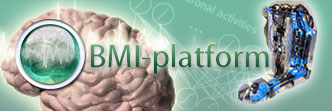
 4,393 records
4,393 records
Brain Machine Interface Platform (BMI PF) provides interdisciplinary information on brain machine interfaces.
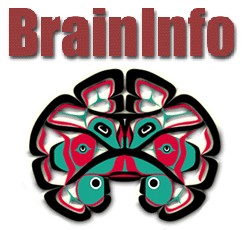
 20,280 records
20,280 records
BrainInfo provides atlas information of the brain, including brain structures, nomenclature and relationships across seven languages.

 1,138 records
1,138 records
BrainMaps.org is a high-resolution brain atlas of primate and non-primate brains.

 144 records
144 records
BrainMaps.org provides high-resolution brain datasets of primate and non-primate brains.

 8,673,960 records
8,673,960 records
BrainSpan: Atlas of the Developing Human Brain - Gene data set contains lifespan gene expression levels for exons measured by microarray profiling, averaged to genes.

 113,595,912 records
113,595,912 records
BrainSpan: Atlas of the Developing Human Brain is designed as a foundational resource for studying transcriptional mechanisms involved in human brain development. The Exon microarray summarized to probe sets dataset contains normalized RNA-Seq expression values for analysis.

 132,135,906 records
132,135,906 records
BrainSpan: Atlas of the Developing Human Brain - Exons data set contains RNA-Seq RPKM (reads per kilobase per million), values averaged to exons.

 12,927,333 records
12,927,333 records
BrainSpan: Atlas of the Developing Human Brain - Gene View contains RNA-Seq RPKM (reads per kilobase per million), values averaged to genes, over human brain development.
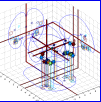
 3,912 records
3,912 records
Brede Database provides functional activation foci data (Talairach coordinates) from published neuroimaging articles.
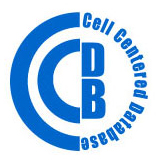
 471 records
471 records
The Cell Centered Database (CCDB) was a web accessible database for high resolution 2D, 3D and 4D data from light and electron microscopy, including correlated imaging. The data can be accessed via the Cell Image Library

 203 records
203 records
The Cell Centered Database (CCDB) is a web-accessible database for high resolution 2D, 3D and 4D data from light and electron microscopy, including correlated imaging. In this view, information about subcellular protein location is available.
 10,185 records
10,185 records
The Cell: An Image Library provides annotated images, videos and animations of cellular processes.

 712 records
712 records
CellML Model Repository is a free, open-source, extensible markup language based standard for defining mathematical models of cellular function.

Cellosaurus: Cell Lines
Used in
 143,185 records
143,185 records
Cellosaurus is database indexing available cell lines from various collections: American Type Culture Collection (ATCC), Bioresource Collection and Research Center, Taiwan (BCRC), Banco de Células do Rio de Janeiro (BCRJ), CellBank Australia (CBA), Collection of Cell Lines in Veterinary Medicine (CCLV), Cell Lines Service (CLS), Coriell, Drosophila Genomics Resource Center (DGRC), Deutsche Sammlung von Mikroorganismen und Zellkulturen GmbH (DSMZ), European Bank for induced pluripotent Stem Cells (EBiSC), European Collection of Authenticated Cell Cultures (ECACC), Interlab Cell Line Collection (ICLC), Institute for Fermentation Osaka (IFO), Istituto Zooprofilattico Sperimentale della Lombardia e dell'Emilia Romagna (IZSLER) biobank, Japanese Collection of Research Bioresources (JCRB) Cell Bank, Kunming Cell Bank of Type Culture Collection (KCB), Korean Cell Line Bank (KCLB), Millipore, National Cell Bank of Iran (NCBI_Iran), National Cancer Institute - Developmental Therapeutics Program (NCI-DTP), NINDS Human Cell and Data Repository (NHCDR), NIH AIDS Reagent Program (NIH-ARP), NISES, RIKEN Bioresource Center Cell Bank (RCB), Royan Stem Cell Bank (RSCB), Tick Cell Biobank (TCB), Tohoku University cell line catalog (TKG), and Ximbio.

 26 records
26 records

 729 records
729 records
CEPALSTAT is the gateway to the statistical information collected by the Economic Commission for Latin America and the Caribbean (ECLAC or CEPAL in Spanish). The indicators view lists regional and national statistics based on social, demographic, economic and environmental indicators.

 1,276 records
1,276 records
The Cerebellar Platform is an interdisciplinary repository containing information on cerebellur anatomy and physiology.

 601,437 records
601,437 records
ChEBI, Chemical Entities of Biological Interest provides data on natural or synthetic chemical compounds interact with biological processes.

 4,385 records
4,385 records
The Clinical Genomic Database is a manually curated database of conditions with known genetic causes, focusing on medically significant genetic data with available interventions. The GeneticCondition view provides information on conditions with known single gene alterations.

ClinicalTrials.gov: Trial List
Used in
 406,549 records
406,549 records
ClinicalTrials.gov is a registry of clinical studies conducted primarily within the United States.

 6,486 records
6,486 records
The ClinVar aggregates information about sequence variation and its relationship to human health. The ClinVar:GeneDisease shows the curated relationships between a gene and a ClinVar disease.

 8,037 records
8,037 records
The ClinVar aggregates information about sequence variation and its relationship to human health. The ClinVar:Trait view provides a mapping of ClinVar traits, MedGen terms and other identifiers.

 671,662 records
671,662 records
The ClinVar aggregates information about sequence variation and its relationship to human health. The ClinVar:VariantPhenotypes view provides information on sequence alterations present in genes and the resulting phenotypes. For records listing more than one variation, data is presented with the assumption that the individual sequence alterations are in cis.

 54,173 records
54,173 records
Coriell Cell Repositories provides cell cultures and DNA from the NIGMS and the NINDS research repositories available to the research community.

 54,173 records
54,173 records
The Coriell Cell Repositories provides cell cultures and DNA from NIGMS and the NINDS research repositories available to the research community.

 13,281 records
13,281 records
The Coriell Cell Repositories provides cell cultures and DNA from the NIGMS research repositories available to the research community.

 40,892 records
40,892 records
The Coriell Cell Repositories provides cell cultures and DNA from the NINDS research repositories available to the research community.

 140 records
140 records
Collaborative Research in Computational Neuroscience hosts experimental data sets that may be used to test computational models of the brain.

 19 records
19 records
Collaborative Research in Computational Neuroscience hosts experimental data sets that may be used to test computational models of the brain.

 32 records
32 records
The Community Structure-Activity Resource (CSAR) provides experimental datasets of crystal structures and binding affinities for diverse protein-ligand complexes. Some datasets are generated in house while are collected from the literature or deposited by academic labs, national centers, and the pharmaceutical industry. The aim is to provide the highest quality data for a diverse collection of proteins and small molecule ligands.

 6,568,859 records
6,568,859 records
Comparative Toxicogenomics Database (CTD) provides information on effects of environmental chemicals on human health. The ChemDisease view is a set of curated and inferred chemical–disease associations.

 1,904,888 records
1,904,888 records
Comparative Toxicogenomics Database (CTD) provides information on the effects of environmental chemicals on human health. The ChemGene view is a set of curated chemical–gene and –protein interactions in vertebrates and invertebrates.

 74,570,338 records
74,570,338 records
Comparative Toxicogenomics Database (CTD) provides information on effects of environmental chemicals on human health. The DiseaseGeneAssociation view is a set of curated disease-gene associations (curated and inferred via chemical interactions) in vertebrates and invertebrates.

 5,013 records
5,013 records
Comparative Toxicogenomics Database (CTD) provides information on effects of environmental chemicals on human health. The Diseasepathway view is a set of associations between pathways and diseases.

Diabetic Complications Consortium: Animals
Used in
 139 records
139 records
Diabetic Complications Consortium provides data and information relevant to diabetes.

Diabetic Complications Consortium: Histology
Used in
 244 records
244 records
Diabetic Complications Consortium contains sets of histology images.

Diabetic Complications Consortium: Protocols
Used in
 74 records
74 records
Diabetic Complications Consortium provides provides a list of protocols used by DiaComp.

dkNET Pilot Funding News: List
Used in
 138 records
138 records
NIDDK Information Network (dkNET) curated a list of community-based funding opportunities provided by projects or organizations other than government granting agencies (such as NIH or NSF), e.g., pilot projects, training opportunities.

 111 records
111 records
This dataset was originally published by the Community Structure-Activity Resource (CSAR), which provides experimental datasets of crystal structures and binding affinities for diverse protein-ligand complexes.

 111 records
111 records
This dataset was originally published by the Community Structure-Activity Resource (CSAR), which provides experimental datasets of crystal structures and binding affinities for diverse protein-ligand complexes.

 140 records
140 records
This dataset was originally published by the Community Structure-Activity Resource (CSAR), which provides experimental datasets of crystal structures and binding affinities for diverse protein-ligand complexes.

 10 records
10 records
This dataset was originally published by the Community Structure-Activity Resource (CSAR), which provides experimental datasets of crystal structures and binding affinities for diverse protein-ligand complexes.

 298 records
298 records
This dataset was originally published by the Community Structure-Activity Resource (CSAR), which provides experimental datasets of crystal structures and binding affinities for diverse protein-ligand complexes.

 45 records
45 records
This dataset was originally published by the Community Structure-Activity Resource (CSAR), which provides experimental datasets of crystal structures and binding affinities for diverse protein-ligand complexes.

 69 records
69 records
This dataset was originally published by the Community Structure-Activity Resource (CSAR), which provides experimental datasets of crystal structures and binding affinities for diverse protein-ligand complexes.

 19 records
19 records
This dataset was originally published by the Community Structure-Activity Resource (CSAR), which provides experimental datasets of crystal structures and binding affinities for diverse protein-ligand complexes.

 180 records
180 records
This dataset was originally published by the Community Structure-Activity Resource (CSAR), which provides experimental datasets of crystal structures and binding affinities for diverse protein-ligand complexes.

 32 records
32 records
This dataset was originally published by the Community Structure-Activity Resource (CSAR), which provides experimental datasets of crystal structures and binding affinities for diverse protein-ligand complexes.

 32 records
32 records
This dataset was originally published by the Community Structure-Activity Resource (CSAR), which provides experimental datasets of crystal structures and binding affinities for diverse protein-ligand complexes.

 276 records
276 records
This dataset was originally published by the Community Structure-Activity Resource (CSAR), which provides experimental datasets of crystal structures and binding affinities for diverse protein-ligand complexes.

 31 records
31 records
This dataset was originally published by the Community Structure-Activity Resource (CSAR), which provides experimental datasets of crystal structures and binding affinities for diverse protein-ligand complexes.

 46 records
46 records
This dataset was originally published by the Community Structure-Activity Resource (CSAR), which provides experimental datasets of crystal structures and binding affinities for diverse protein-ligand complexes.

 65,534 records
65,534 records
The DRG provides differential gene expression data relevant to addiction where data types include the effects of a drug, strain, or knockout on a particular gene, in a particular brain region. Share your data set.

 14,315 records
14,315 records
The DrugBank database combines detailed drug (i.e. chemical, pharmacological and pharmaceutical) data with comprehensive drug target (i.e. sequence, structure, and pathway) information. The Drugs view consists of a summary of the drug entries.

 5,174 records
5,174 records
The DrugBank database combines detailed drug (i.e. chemical, pharmacological and pharmaceutical) data with comprehensive drug target (i.e. sequence, structure, and pathway) information. The Proteins view contains an overview of the proteins associated with the drug entries.

 681 records
681 records
Educational Resources in Neuroscience is a database that lists, reviews, and rates resources for teaching neuroscience at the graduate and undergraduate level.
 109 records
109 records
EEGbase provides information related to EEG/ERP research, including data, tools and resources. Note: You must obtain credentials from the EEGbase site to view the rest of the data.

 400 records
400 records
The NHGRI Elements of Morphology: Human Malformation Terminology is being developed by a group of international clinicians working in the field of dysmorphology to standardize terms used to describe human morphology, thereby increasing the utility of descriptions of human phenotype and facilitating reliable comparisons of findings among patients.

 937,864 records
937,864 records
The Ensembl produces genome databases for vertebrates and other eukaryotic species, and makes this information freely available online.

 52,227 records
52,227 records
The ENSEMBL project produces genome databases for vertebrates and other eukaryotic species, and makes this information freely available online. The ENSEMBL:FeatureLoc view indicates the genomic coordinates of human variants aggregated into ENSEMBL from a variety of sources.

 18,780 records
18,780 records
The ENSEMBL project produces genome databases for vertebrates and other eukaryotic species. The VariantPhenotypes view links human genomic variants with their curated diseases (currently limited here to OMIM diseases), aggregated into ENSEMBL from a variety of sources.

 3,256 records
3,256 records
The Epigenomics Project produces a public resource of human epigenomic data to catalyze basic biology and disease-oriented research.

 446,869 records
446,869 records

 91 records
91 records
Eukaryotic Pathogen Database (EuPathDB) Bioinformatics Resource Center is a portal for accessing genomic-scale datasets associated with the eukaryotic pathogens (Babesia, Cryptosporidium, Encephalitozoon, Entamoeba, Enterocytozoon, Giardia, Leishmania, Neospora, Plasmodium, Theileria, Toxoplasma, Trichomonas and Trypanosoma). Additional information available at EuPathDB.

 27,389 records
27,389 records
Exon Array Browser is a data set that provides transcriptome information on several mouse nervous system cells at several stages of development. The data shows the average probe intensity for hundreds of exon probes for each cell type.

 26 records
26 records
Expression Atlas of the Marmoset archives the supplemental material from the paper: J Neurosci. 2012 Apr 11;32(15):5039-53. DOI:10.1523/JNEUROSCI.4788-11.2012. Comparative anatomy of marmoset and mouse cortex from genomic expression.

 14,768 records
14,768 records
F1000 Posters is an open access repository of conference posters and slides from across biology and medicine.

 1,488 records
1,488 records
Approved Drug Products with Therapeutic Equivalence Evaluations (Orange Book) identifies drug products approved on the basis of safety and effectiveness by the Food and Drug Administration (FDA) under the Federal Food, Drug, and Cosmetic Act. Exclusivity refers to the exclusive marketing rights granted by the FDA upon approval of a drug (more information available here).

 11,384 records
11,384 records
Approved Drug Products with Therapeutic Equivalence Evaluations (Orange Book) identifies drug products approved on the basis of safety and effectiveness by the Food and Drug Administration (FDA) under the Federal Food, Drug, and Cosmetic Act. Patents submitted on FDA Form 3542 and listed after August 18, 2003 may have a drug substance flag (indicating the sponsor submitted the patent as claiming the drug substance), a drug product flag (indicating the sponsor submitted the patent as claiming the drug product), or both. The delist flag indicates the sponsor has requested patent be delisted, but it remains listed. More information is available here and here.

 30,457 records
30,457 records
Approved Drug Products with Therapeutic Equivalence Evaluations (Orange Book) identifies drug products approved on the basis of safety and effectiveness by the Food and Drug Administration (FDA) under the Federal Food, Drug, and Cosmetic Act. For more information about the Therapeutic Equivalence Codes and other terms, please go to this information page.

 948,773 records
948,773 records
FlyBase is a database of genetic and molecular data for D. melanogaster and other Drosophila species. Flybase:Genotypes are the curated details of genetic variant flies, laboratory strains, and relevant publications.

 372,807 records
372,807 records
FlyBase is a database of genetic and molecular data for D. melanogaster and other Drosophila species. The Phenotypes view shows the curated links for phenotypes of the flies of a specified genotype, in a specified environment, attributed to a publication.
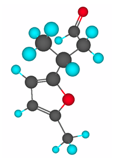
 526 records
526 records
GARA contains spatial distribution maps of rat olfactory bulb in response to odorant stimuli.

 2,285 records
2,285 records
Gemma is a resource for the meta-analysis, re-use and sharing of genomics data. This view provides an overview of the gene expression studies.

 308,657,161 records
308,657,161 records
Gemma provides tools and data for meta-analysis of functional genomics data.
 57 records
57 records
Gene Ontology Tools provides resources that enable ontological annotation of genes nomenclature, symbols and classification.
Note: The GO Tools Registry is no longer supported (see here).

 2,094,604 records
2,094,604 records
GeneNetwork provides resources and analysis tools for genetics research.

 752 records
752 records
GeneReviews are expert-authored, peer-reviewed disease descriptions ("chapters") presented in a standardized format and focused on clinically relevant and medically actionable information on the diagnosis, management, and genetic counseling of patients and families with specific inherited conditions.

 31,933 records
31,933 records
GeneWeaver provides integrated genotype-phenotype information across species, tissues and experimental paradigms, formally known as Ontological Discovery Environment (ODE).

 34,027 records
34,027 records
GENSAT contains gene expression data and maps of the mouse central nervous system.
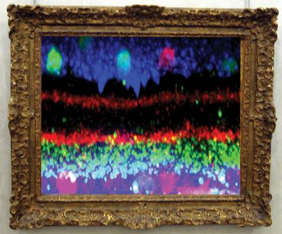
 384 records
384 records
The GENSAT Retina Project provides a collection of images from cell type-specific protein expression in the retina using BAC transgenic mice.

 68,725 records
68,725 records
Gene Expression Omnibus contains gene-specific information from submitted microarray and sequencing studies.
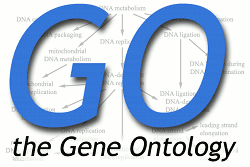
 327 records
327 records
GO (Gene Ontology Consortium, composed of all major model organism databases) provides characterization of genes into functional classes based on the Gene Ontology. This DBxrefs view maintains and supplies a list of externally referenced databases used in their annotations, along with metadata on identifiers and URLs.

 2,990,692 records
2,990,692 records
GO (Gene Ontology Consortium, composed of all major model organism databases) provides characterization of genes into functional classes based on the Gene Ontology.

Grants.gov: Opportunity
Used in
 66,938 records
66,938 records
Grants.gov provides information on over 1,000 grant programs open for application.

GUDMAP: Expression
Used in
 51,837 records
51,837 records
GUDMAP, GenitoUrinary Molecular Anatomy Project, aggregates and provides experimental gene expression data from the genito-urinary system. GUDMAP upgraded their website infrastructure and has integrated their resources with the (Re)BuildingaKidney consortium. For most current data, please visit GUDMAP.org.

GUDMAP: Image
Used in
 29,787 records
29,787 records
GUDMAP, GenitoUrinary Development Molecular Anatomy Project, aggregates and provides images of experimental gene expression data from the mouse genitourinary system. The image links to the image set, where individual images can be downloaded. GUDMAP upgraded their website infrastructure and has integrated their resources with the (Re)BuildingaKidney consortium. For most current data, please visit GUDMAP.org.

GUDMAP: Protocols
Used in
 63 records
63 records
GUDMAP Protocols provides experimental protocols and standard specifications by a variety of groups from the GenitoUrinary Development Molecular Anatomy Project (GUDMAP). GUDMAP upgraded their website infrastructure and has integrated their resources with the (Re)BuildingaKidney consortium. For most current data, please visit GUDMAP: protocols.

 18,516 records
18,516 records
GWAS Catalog includes genomic studies attempting to assay at least 100,000 single nucleotide polymorphisms (SNPs). For a detailed description, see the GWAS site.

 4,770 records
4,770 records
HealthData.gov is a public repository of datasets, tools, and applications using data about health and health care.

 47,063 records
47,063 records
The HUGO Gene Nomenclature Committee assigns standardised nomenclature to human genes. This HGNC:Gene view provides gene names, symbols, and additional data on approved genes.

 1,214 records
1,214 records
The HUGO Gene Nomenclature Committee assigns standardised nomenclature to human genes. This LSDB view provides the links to the locus-specific databases for each human gene.

 122 records
122 records
The Hippocampome.org is curated knowledge base of the circuitry of the hippocampus of normal adult, or adolescent, rodents at the mesoscopic level of neuronal types.

 122 records
122 records
The Hippocampome.org is curated knowledge base of the circuitry of the hippocampus of normal adult, or adolescent, rodents at the mesoscopic level of neuronal types.

HIRN: Antibodies
Used in
 625 records
625 records
The Human Islet Research Network (HIRN) helps to organize and support collaborative research related to the loss of functional beta cell mass in Type 1 Diabetes. The antibodies view is a list of antibodies used by HIRN researchers. The "Antibody Name" column links to the HIRN individual antibody pages, and the "Research Resource Identifier" column links to Antibody Registry portal, where more updated information may be found.

HIRN: Cell Lines
Used in
 115 records
115 records
The Human Islet Research Network (HIRN) helps to organize and support collaborative research related to the loss of functional beta cell mass in Type 1 Diabetes. The cell line view is a list of cell lines used by HIRN researchers. The "Cell Line Name" column links to information about individual cell lines.

HIRN: Constructs
Used in
 9 records
9 records
The Human Islet Research Network (HIRN) helps to organize and support collaborative research related to the loss of functional beta cell mass in Type 1 Diabetes. The constructs view is a list of constructs used by HIRN researchers. The "Name" column links to the HIRN individual construct pages.

HIRN: Datasets
Used in
 201 records
201 records
The Human Islet Research Network (HIRN) helps to organize and support collaborative research related to the loss of functional beta cell mass in Type 1 Diabetes. The datasets view is a list of datasets used by HIRN researchers. The "Name" column links to the HIRN individual dataset pages.

HIRN: Model Organism
Used in
 172 records
172 records
The Human Islet Research Network (HIRN) helps to organize and support collaborative research related to the loss of functional beta cell mass in Type 1 Diabetes. The model organism view is a list of model organisms used by HIRN researchers. The "Name" column links to the HIRN individual model organism pages, and the "Research Resource Identifier" column links to individual resource page from its repository, where more information can be found.

 19 records
19 records

HIRN: Protocols
Used in
 52 records
52 records
The Human Islet Research Network (HIRN) helps to organize and support collaborative research related to the loss of functional beta cell mass in Type 1 Diabetes. The protocols view is a list of protocols used by HIRN researchers. The "Name" column links to the HIRN individual protocol pages, and the "Protocols.io" column links to protocols.io, where detailed information may be found.

 228,929 records
228,929 records
HomoloGene is an automated system to detect genetic homolog information among common animal model species.

 9,398 records
9,398 records
The HPO group provides annotations of human phenotypes in disease. The disease to gene view is a set of known associations between genes and diseases.


 521,507 records
521,507 records
HPO annotations provide annotations of human phenotypes and diseases. This phenotype to gene view shows the associations between a phenotype and its putative causative gene based on the relationship between a gene and its known involvement in a disease.

 1,241 records
1,241 records
The Blue Brain Project contains a dataset of 3D models of rat neuronal morphologies.

 9,662 records
9,662 records
The Human Life-Table Database provides detailed mortality and population data to those interested in the history of human longevity.

 9,662 records
9,662 records
The Human Mortality Database (HMD) contains original calculations of death rates and life tables for national populations (countries or areas), as well as the input data used in constructing those tables. Life tables represent the overall mortality rates over the entire lifetimes of people born within a short time interval. Human Life-Table Database life tables are official life tables for national populations, life tables for certain regional or ethnic sub-populations within countries, and non-official life tables produced by researchers.
 3,982 records
3,982 records
The Human Brain Atlas contains sections stained for cell bodies or nerve fibers, as well as corresponding MRI sections through a living human brain.

 11,669 records
11,669 records
Internet Brain Volume Database provides neuroanatomical volumetric data for both group and individual cases.

 42,400 records
42,400 records
The International Mouse Phenotyping Consortium creates, curates, and maintains targeted knockout mutations in embryonic stem cells for 20,000 known and predicted mouse genes. The KnockoutPhenotypes view reports on the phenotypes collected from a broad-based primary phenotyping pipeline in all the major adult organ systems.

 7,012 records
7,012 records
The International Mouse Phenotyping Consortium creates, curates, and maintains targeted knockout mutations in embryonic stem cells for 20,000 known and predicted mouse genes. The MouseGenotypes view reports on the genotypes collected from a broad based primary phenotyping pipeline in all the major adult organ systems.

 42,224 records
42,224 records
The International Mouse Phenotyping Consortium creates, curates, and maintains targeted knockout mutations in embryonic stem cells for 20,000 known and predicted mouse genes. The MousePhenotypes view reports on genotypes and associated phenotypes collected from a broad-based primary phenotyping pipeline in all the major adult organ systems. All phenotype calls are found to be significant with a p-value < 1×10^-4.

Integrated: Animals
Used in
 666,477 records
666,477 records
Integrated Animals is a virtual database currently indexing available animal strains and mutants from: AGSC (Ambystoma), BCBC (mice), BDSC (flies), European Xenopus Resource Center (frog), The National Xenopus Resource (frog), Xenopus Express (frog), CWRU Cystic Fibrosis Mouse Models (mice), DGGR (flies), FlyBase (flies), IMSR (mice), MGI (mice), MMRRC (mice), NSRRC (pig), RGD (rats), Sperm Stem Cell Libraries for Biological Research (rats), Tetrahymena Stock Center (Tetrahymena), WormBase (worms), XGSC (Xiphophorus), ZFIN (zebrafish), and ZIRC (zebrafish). Note, the IMSR data is linked, but users may need to re-execute the search if the top mouse is not returned properly.
Note: BCBC is no longer in service, so the links may not be functional.

 9,487,854 records
9,487,854 records
Integrated Manually Extracted Annotation is a virtual database of annotations manually created by various database curators. Each row represents an annotation item such as the reagent used in a paper or a data set link. Many of these annotations are published in PubMed as LinkOuts. (View participating resources)

 89,124 records
89,124 records
Integrated Blogs is a virtual database indexing a variety of scientific blog and news resources. A list of the participating resources is provided here.

 2,850,991 records
2,850,991 records
Integrated Brain Gene Expression is a virtual database indexing mouse brain region gene expression data from: Allen Mouse Brain Atlas, Gene Expression Nervous System Atlas (GENSAT), and Mouse Genome Informatics (MGI).

 414,819 records
414,819 records
Integrated Cell Lines is a virtual database indexing available cell lines from: American Type Culture Collection (ATCC), Beta Cell Biology Consortium (BCBC), Cellosaurus, Coriell Cell Repositories, Drosophila Genomics Resource Center (DGRC), International Mouse Strain Resource (IMSR), International Stem Cell Registry, NIH Human Embryonic Stem Cell Registry, National Cancer Institute's Developmental Therapeutics Program (DTP), and Nuclear Receptor Signaling Atlas (NURSA). Alert: The links to IMSR sometimes do not produce proper results in IMSR, we have asked them to update this, but currently users may need to take the identifier for the resource and use google to find the appropriate cell lines.

 438,790 records
438,790 records
Integrated Clinical Trials is a virtual database currently indexing clinical trials from: EU Clinical Trials Register and ClinicalTrials.gov.

 190,775 records
190,775 records
Integrated Connectivity is a virtual dataset of connectivity statements from Avian Brain Circuitry Database (ABCD), BlueBrain Bluima Connectivity, Brain Architecture Management System (BAMS), BrainMaps.org, CoCoMac,Connectome Wiki, and the Hippocampal-Parahippocampal Table of Temporal-Lobe.com.
Note: ABCD, Connectome Wiki, and the Hippocampal-Parahippocampal Table of Temporal-Lobe.com are no longer in service.

 2 records
2 records
The Integrated Data Annotation is a virtual database of annotations between data repositories and databases. A list of the participating resources is provided here.

 232,607 records
232,607 records
The Integrated Datasets is a virtual database currently indexing a variety of data sets. A list of the participating data resources is provided here.

 445 records
445 records
Integrated Disease is a virtual database that indexes authoritative information on disease and treatment options from: NINDS Disorder List and PubMed Health.

 42,874,516 records
42,874,516 records
Integrated Gene-Disease Interaction is a virtual database currently indexing interaction between genes and diseases from the Online Mendelian Inheritance in Man (OMIM) and the Comparative Toxicogenomics Database (CTD).

 3,022,819 records
3,022,819 records
Integrated Grants is a virtual database currently indexing funded research resources including NIH Research Portfolio Online Reporting Tool (RePORT) (current grants, updated monthly), International Alzheimer’s Disease Research Portfolio (IADRP) database and ResearchCrossroads (1970-2008, defunct as of 2009).
Note: ResearchCrossroads is no longer in service.

 2,340 records
2,340 records
Integrated Jobs is a virtual database indexing the following Scientific Job resources: Naturejobs, Monster, Indeed, Hays, jobs.ac.uk, New Scientist Jobs, Science Careers, Access-ScienceJobs.co.uk, TheScienceJobs.com, ScienceBlogs: Jobs and It Takes 30.

 4,112 records
4,112 records
Integrated Models is a virtual database currently indexing computational models from: CellML, ModelDB, Open Source Brain, SimTK.

 8,321 records
8,321 records
Integrated Podcasts is a virtual database currently indexing multiple podcast resources. A list of the participating resources is provided here.

 8,993 records
8,993 records
Integrated Software is a virtual database indexing software and tools from: SciCrunch, NITRC, Visiome Platform, Cerebellar Platform, Brain Machine Interface Platform and Genetic Analysis Software (GAS).

 22,746 records
22,746 records
Integrated Videos is a virtual database indexing videos and other multimedia from: NIH VideoCast, GoCognitive, UCSF Laboratory for Visual Neuroscience, The Guardian: Science Videos, BioInteractive, CLARITY resources and Journal of Visualized Experiments (JoVE). JoVE is a peer-reviewed, PubMed-indexed journal devoted to the publication of biological research in the video format, and NIH VideoCast is a vast archive of scientific talks given at various NIH meetings and functions.

 3,706 records
3,706 records
IonChannelGenealogy provides a quantitative assay of publicly available ion channel models. Descriptions of the columns are available here.

ISCC: Antibodies
Used in
 93 records
93 records
The ISCC Antibody Collection is a repository of antibodies relevant to intestinal epithelial stem cell biology.

ISCC: Protocol
Used in
 17 records
17 records
The ISCC Protocol Library contains protocols relevant to intestinal stem cell biology.

 593 records
593 records
Information eXtraction from Images (IXI) dataset provides nearly 600 MR images from normal, healthy subjects, along with demographic characteristics, collected as part of the Information eXtraction from Images (IXI) project available for download. Tar files containing T1, T2, PD, MRA and DTI (15 directions) scans from these subjects are available..

 233 records
233 records
The Kawasaki Disease Dataset contains results of blood tests in patients with Kawasaki Disease.

 1,831 records
1,831 records
KEGG is a database resource for understanding high-level functions and utilities of the biological system, such as the cell, the organism and the ecosystem, from molecular-level information, especially large-scale molecular datasets generated by genome sequencing and other high-throughput experimental technologies. The Disease view describes the curated links between a disease, its pathways, human genes, and relevant literature.

 71,608 records
71,608 records
KEGG is a database resource for understanding high-level functions and utilities of the biological system, such as the cell, the organism and the ecosystem, from molecular-level information, especially large-scale molecular datasets generated by genome sequencing and other high-throughput experimental technologies. KEGG:Orthologs describes the curated links between a gene (ortholog) class and it's species-specific genes.

 536 records
536 records
KEGG is a database resource for understanding high-level functions and utilities of the biological system, such as the cell, the organism and the ecosystem, from molecular-level information, especially large-scale molecular datasets generated by genome sequencing and other high-throughput experimental technologies. KEGG:PathwayGeneOrthologs describes the curated links between a KEGG Pathway and its participating genes (via ortholog class).

 97,109 records
97,109 records
PDSP Ki Database provides affinity values of interactions between common drugs and brain receptors.

 26,857 records
26,857 records
The Kravitz Dataset1 consists of datasets published in Kravitz et al., 2012. The Mouse 1 view is a set of recordings for one mouse.

 78,599 records
78,599 records
The Kravitz Dataset1 consists of datasets published in Kravitz et al., 2012. The Mouse 2 view is a set of recordings for one mouse.

 48,797 records
48,797 records
The Kravitz Dataset1 consists of datasets published in Kravitz et al., 2012. The Mouse 3 view is a set of recordings for one mouse.

 50 records
50 records
UCSF Laboratory for Visual Neuroscience provides high-resolution images of brain regions, circuitry and neurons related to visual system.

 5,085 records
5,085 records
The Lifespan Observations Database collects published lifespan data across multiple species.

LIPID MAPS Proteome Database: Gene
Used in
 8,769 records
8,769 records
The LIPID MAPS Proteome Database (LMPD) provides information on gene and proteins associated with lipids.

LIPID MAPS Structure Database: Compounds
Used in
 46,932 records
46,932 records
The LIPID MAPS Structure Database (LMSD) provides structural data and annotations of biologically relevant lipids.
 144,149 records
144,149 records
Mouse Genome Informatics offered by The Jackson Laboratory includes information on integrated genetic, genomic, and biological data. In this MouseGenotypes view, genotypes are mapped to their component parts, including genes, alleles, and genetic backgrounds.
 344,709 records
344,709 records
Mouse Genome Informatics offered by The Jackson Laboratory includes information on integrated genetic, genomic, phenotypic, and biological data of the laboratory mouse. This Phenotypes view presents the curated relationships between genotypes and phenotypes.
 68,992 records
68,992 records
MGI Transgenes contains annotated gene expression data for transgenes and knock in alleles.

MMPC: Protocols
Used in
 244 records
244 records
National Mouse Metabolic Phenotyping Centers provides the protocols used by MMPC for mouse models of diabetes.

MMPC: Resources
Used in
 203 records
203 records
National Mouse Metabolic Phenotyping Centers provide information and data about mouse models of diabetes.


 49 records
49 records
The Model Run is a dataset of output of neuron models through the Trestles supercomputer.

 71,219 records
71,219 records
The Monarch Integrated Disease Models aggregates experimental models of disease from MGI, RGD, ZFIN, CORIELL Cell Line Database, WB, FB, and OMIA, listing asserted and inferred models of disease (via orthology from PANTHER).

 63,700 records
63,700 records
This view integrates orthology calls of human genes to model organisms from a variety of sources, including PANTHER, ZFIN (and others TBD).

 29,067,279 records
29,067,279 records
The MonarchInitiative has created a list of equivalent and alternative identifiers for genes and proteins, drawn from a number of external resources including: NCBI, BioGRID, ENSEMBL, MGI, RGD, WB, UniProt, KEGG, OMIM, DrugBank, PharmGKB, and ZFIN.

 376 records
376 records
The Mouse Phenome Database is a project at The Jackson Laboratory that collects and curates mouse strain survey data for behavior, physiology, and anatomy. Data are available for inbred and recombinant inbred strains, chromosome substitution strains, other classical panels, Collaborative Cross (CC) lines and Diversity Outbred (DO) populations.

 18,127 records
18,127 records
The Mouse Phenome Database is a project at the Jackson Laboratory that characterizes mouse studies based on the types of measurements used in each study. This MeasurementDefinitions view shows the curated mappings of the assay measurements to relevant phenotype, trait, and anatomy terms.

 10,377 records
10,377 records
The Mouse Phenome Database is a project at The Jackson Laboratory which collects and curates mouse strain survey data for behavior, physiology, and anatomy. Data are available for inbred and recombinant inbred strains, chromosome substitution strains, other classical panels, Collaborative Cross (CC) lines and Diversity Outbred (DO) populations. The MPD:StrainPhenotypes view computes the extreme outlier phenotypes (>2 s.d.) as compared to the overall mean for each assay, and maps the quantitative measurements to their qualitative phenotype. (The strains measured for each assay varies, and therefore the means computed may be drawn from collections of different strains.)

 16,300 records
16,300 records
The Mind Research Network (MRN) is an independent non-profit organization dedicated to advancing the diagnosis and treatment of mental illness and other brain disorders. This view does not link back to MRN records because that functionality has not yet been added to MRN, users will need to re-execute their query in the MRN site.

NCBI BioSample: BioSample
Used in
 3,032 records
3,032 records
The NCBI BioSample provides descriptions of biological source materials used in experimental assays.

 31,574,526 records
31,574,526 records
NCBI Gene provides information for known and predicted genes from a wide range of species. The GeneInfo view provides an overview of genes, including the official symbol, the NCBI Gene ID, the source organism, and additional data.

 1,529,281 records
1,529,281 records
NCBI Gene provides information for known and predicted genes from a wide range of species. The GeneRIF view provides a listing of genes and their associated GeneRIFs (Gene Reference into Function).

 13,524,991 records
13,524,991 records
NCBI Gene provides information for known and predicted genes from a wide range of species. The GeneToPubmed view provides a mapping from genes to associated PubMed publications.

 2,331,320 records
2,331,320 records
The NCBI Taxonomy Database is a classification and nomenclature of all organisms that are represented in the public genetic sequence databases with at least one nucleotide or protein sequence.
 451 records
451 records
The NIMH Chemical Synthesis and Drug Supply Program synthesizes, purifies, and distributes otherwise unavailable compounds to stimulate research in psychopharmacology relevant to mental health. Column abbreviations: HBA - # of hydrogen-bond acceptor groups; HBD - # of hydrogen-bond donor groups; RotB - # of freely rotatable bonds; AlogP - Ghose-Crippen octanol-water partition coefficient; TPSA - Topological Polar Surface Area.

 14 records
14 records
Neurodatabase.org contains neurophysiological data, such as single-unit recordings, available for download. Note: Neurodatabase is no longer accessible through the web.

 1,767 records
1,767 records
NeuroElectro is a database of elecrophysiological properties text-mined from the biomedical literature as a function of neuron type.

 711 records
711 records
The Brain Region Registry is a curated knowledge base of brain regions developed within the Neurolex in collaboration with the International Neuroinformatics Coordinating Facility.

 295 records
295 records
The Neuron Registry is a curated knowledge base of neurons developed within Neurolex in collaboration with the International Neuroinformatics Coordinating Facility.

 1,559 records
1,559 records
NeuroML database is a curated relational database that provides for the storage and retrieval of computational neuroscience model.

 147,472 records
147,472 records
NeuroMorpho.Org contains a curated repository of digitally reconstructed neurons.




 448,255 records
448,255 records
NeuroSynth is a platform for large-scale, automated synthesis of functional magnetic resonance imaging (fMRI) data extracted from published articles using text mining tools. Note: The website is currently under maintenance, so the links may not be fully functional.

 31,421 records
31,421 records
NeuroVault is a public repository where researchers can publicly store and share unthresholded statistical brain activation maps produced by MRI and PET studies.

 71 records
71 records
NIDA Data Share disseminates data from completed clinical trials related to drug abuse and addiction. This view gives an overview of the studies within NIDA Data Share.

NIDDK Central Repository: Data
Used in
 168 records
168 records
An archive of clinical data and documentation from NIDDK-sponsored studies.

 1,391 records
1,391 records
NITRC-IR is an NITRC-hosted image repository (IR) to support NIfTI and DICOM neuroimaging data that is searchable by metadata, such as handedness and gender, across projects. NITRC-IR is powered by XNAT and contains over a dozen datasets, with thousands of subjects and imaging sessions. One such project is the 1000 Functional Connectomes Project. Please contact nitrcinfo@nitrc.org if you have neuroimaging data to share.

NURSA: Molecules
Used in
 677 records
677 records
Curated information on nuclear receptors, ligands and co-regulators from the Nuclear Receptor Signaling Atlas (NURSA). As of March 20, 2020, NURSA is succeeded by the Signaling Pathways Project (SPP). All NURSA-biocurated transcriptomic datasets have been preserved for data mining in SPP. All non-transcriptomic dataset NURSA content will be transferred to dkNET, with whom we are evaluating options for archiving this content.

NURSA: Animal Models
Used in
 3 records
3 records
NURSA Animal Models has a list of animals models from NURSA. As of March 20, 2020, NURSA is succeeded by the Signaling Pathways Project (SPP). All NURSA-biocurated transcriptomic datasets have been preserved for data mining in SPP. All non-transcriptomic dataset NURSA content will be transferred to dkNET, with whom we are evaluating options for archiving this content.

NURSA: Antibodies
Used in
 47 records
47 records
NURSA Antibody a list of the antibodies used in generating NURSA datasets. As of March 20, 2020, NURSA is succeeded by the Signaling Pathways Project (SPP). All NURSA-biocurated transcriptomic datasets have been preserved for data mining in SPP. All non-transcriptomic dataset NURSA content will be transferred to dkNET, with whom we are evaluating options for archiving this content.

NURSA: Cell Lines
Used in
 5 records
5 records
Nuclear Receptor Signaling Atlas provides access to data related to nuclear receptors and nuclear receptor coregulators. As of March 20, 2020, NURSA is succeeded by the Signaling Pathways Project (SPP). All NURSA-biocurated transcriptomic datasets have been preserved for data mining in SPP. All non-transcriptomic dataset NURSA content will be transferred to dkNET, with whom we are evaluating options for archiving this content.

NURSA: Datasets
Used in
 548 records
548 records
NURSA Datasets contains data related to nuclear receptors and nuclear receptor coregulators. As of March 20, 2020, NURSA is succeeded by the Signaling Pathways Project (SPP). All NURSA-biocurated transcriptomic datasets have been preserved for data mining in SPP. All non-transcriptomic dataset NURSA content will be transferred to dkNET, with whom we are evaluating options for archiving this content.

NURSA: PCR Primer
Used in
 54 records
54 records
NURSA PCR Primers contain primer sequences to amplify nuclear receptors. As of March 20, 2020, NURSA is succeeded by the Signaling Pathways Project (SPP). All NURSA-biocurated transcriptomic datasets have been preserved for data mining in SPP. All non-transcriptomic dataset NURSA content will be transferred to dkNET, with whom we are evaluating options for archiving this content.

 48 records
48 records
OdorMapDB contains spatial activation maps of olfactory bulb following odorant stimuli.

 15,516 records
15,516 records
Online Mendelian Inheritance in Animals (OMIA) is a data set describing phenotype relationships with individual breeds and genes. This BreedPhenotypes view curates species and breed-specific-phenotype relationships for non-model organisms.

 21,895 records
21,895 records
Online Mendelian Inheritance in Animals (OMIA) is a resource describing phenotype relationships with between breeds and genes. This GenePhenotypes view curates gene-phenotype relationships for non-model organisms.

Omics Discovery Index: Datasets
Used in
 159,293 records
159,293 records
The Omics Discovery Index (OmicsDI) is a portal that facilitates discovery and access of omics datasets by aggregating metadata across a group of transcriptomics, genomics, proteomics and metabolomics resources.

 82,979 records
82,979 records
The Omics Discovery Index (OmicsDI) is a portal that facilitates discovery and access of omics datasets by aggregating metadata across a group of transcriptomics, genomics, proteomics and metabolomics resources.
 6,015 records
6,015 records
OMIM is a human curated authoritative source of information about disease to gene connections. The DiseaseGeneAssociation view is organized by the OMIM phenotype/disease identifiers, and lists all genes and text annotated to a given disease or phenotype. more about OMIM.
 21,164 records
21,164 records
Online Mendelian Inheritance in Man (OMIM) curates human genetic diseases from the literature. Diseases and phenotypes are annotated to both the gene and allelic variant level. This GeneAllelePhenotype view reflects the allelic phenotypes only, which do not reference the omim phenotype identifiers directly.
 33,108 records
33,108 records
Online Mendelian Inheritance in Man (OMIM) curates human genetic diseases from the literature. The VariantPhenotype view describes the curated relationships between genes, allelic variants (if available), and phenotype.
 625 records
625 records
One Mind Biospecimen Bank Listing is an international registry of biomaterial supply resources - visit SciCrunch to register your resource.





 95 records
95 records
The OpenNeuro is a repository of MRI, MEG, EEG, iEEG, and ECoG datasets submitted by and available to the research community.

 18,707 records
18,707 records
Olfactory Receptor DataBase (ORDB) is a chemoreceptor database, which contains tools to analyze the functions of olfactory-related G protein–coupled receptors.

 6,618 records
6,618 records
Orphanet is the reference portal for information on rare diseases and orphan drugs, for all audiences. Orphanet’s aim is to help improve the diagnosis, care and treatment of patients with rare diseases. This view displays information on genes associated with rare diseases.

 9,399 records
9,399 records
Orphanet is the reference portal for information on rare diseases and orphan drugs, for all audiences. Orphanet’s aim is to help improve the diagnosis, care and treatment of patients with rare diseases. This view displays information on disorders including clinical signs, synonyms, and epidemiological data.

 321,578 records
321,578 records

 292,019 records
292,019 records
The Paleobiology Database (PaleoBioDB) is a database for paleontological data. This view provides collection-based taxonomic information for organisms of all geological ages.

 7,685,501 records
7,685,501 records
Panther contains a classification system that classifies genes by their functions, using published scientific experimental evidence and evolutionary relationships to predict function even in the absence of direct experimental evidence. The Panther:Orthologs view is the curated orthology relationships between genes for human, mouse, rat, fish, worm, and fly.

 1,540 records
1,540 records
PeptideAtlas provides a multi-organism, publicly accessible compendium of peptides identified in a large set of tandem mass spectrometry proteomics experiments collected for human, mouse, yeast, and several other organisms.

 143 records
143 records
Physiobank archives well-characterized digital recordings of physiologic signals and related data for use by the biomedical research community.

 166 records
166 records
Gait in Parkinson's Disease dataset contains gait measurements of patients with idiopathic Parkinson's Disease and matched healthy controls.
 64 records
64 records
Gait Dynamics in Neuro-Degenerative Disease Database contains gait measurements in patients with Parkinson's, Huntington's and Amyotrophic Lateral Sclerosis with matched health controls.

 2,112 records
2,112 records
The Project Tycho maintains a database of public health data that includes data from weekly disease reports for the United States dating back to 1888. Note: You must obtain credentials from the Tycho site to view the data.

 16,483 records
16,483 records
ProteomeXchange provides access to mass spectrometry-based proteomics data from the repositories PRIDE, PeptideAtlas, and MassIVE.

 16,820 records
16,820 records

 234,430,590 records
234,430,590 records
PubChem provides information on the biological activities of small molecules.
 20,110 records
20,110 records
PubMed Health provides information on prescription drugs used to evaluate and treat contemporary diseases.
 262 records
262 records
PubMed Health provides information on prescription health tests used to evaluate and treat contemporary diseases.

 11 records
11 records
Rancho BioSciences view provides manually curated datasets from NCBI’s Gene Expression Omnibus related to oncology, inflammation and asthma.

 256 records
256 records
ReBuilding A Kidney (RBK) is an NIDDK-funded consortium of research projects working to optimize approaches for the isolation, expansion, and differentiation of appropriate kidney cell types and their integration into complex structures that replicate human kidney function. The antibodies view is a list of antibodies used by RBK/GUDMAP researchers. The "Antibody Name" column links to the RBK individual antibody pages.

RePORTER: CurrentNIHGrants
Used in
 408,320 records
408,320 records
NIH RePORTER provides a list of funded grants across NIH institutes.
 21,035 records
21,035 records
SciCrunch Registry is a curated repository of scientific resources, with a focus on biomedical resources, including tools, databases, and core facilities - visit SciCrunch to register your resource.

 20 records
20 records
The Science and Research Data Catalog contains high-value public science and research data sets from the federal government.

 15,710 records
15,710 records
SciScore The Rigor and Transparency Index (RTI) is a metric that reflects the yearly average SciScore for a given journal. This index assesses how many rigor and transparency criteria are present in the average article. For a breakdown of the scoring framework or for the full list of criteria involved, please see Menke et al., 2020 https://www.biorxiv.org/content/10.1101/2020.01.15.908111v1.

 15,710 records
15,710 records
SciScore The Rigor and Transparency Index (RTI) is a metric that reflects the yearly average SciScore for a given journal. This index assesses how many rigor and transparency criteria are present in the average article. For a breakdown of the scoring framework or for the full list of criteria involved, please see Menke et al., 2020 https://www.biorxiv.org/content/10.1101/2020.01.15.908111v1.

 6,144 records
6,144 records
AutDB provides information on animal models used in autism research.

 1,506 records
1,506 records
Simtk Neuromuscular Models Library contains physics-based computational models of biological structures.

 244 records
244 records
The SPARC is a compilation of molecular, anatomical, and functional data for describing cell types and tissues in the peripheral nervous system and the respective organs.

 56 records
56 records
The SPARC is a compilation of molecular, anatomical, and functional data for describing cell types and tissues in the peripheral nervous system and the respective organs.


 353 records
353 records
The SPARC is a compilation of molecular, anatomical, and functional data for describing cell types and tissues in the peripheral nervous system and the respective organs.

 353 records
353 records
The SPARC is a compilation of molecular, anatomical, and functional data for describing cell types and tissues in the peripheral nervous system and the respective organs.

 60 records
60 records
The SPARC is a compilation of molecular, anatomical, and functional data for describing cell types and tissues in the peripheral nervous system and the respective organs.

 20 records
20 records
The studyforrest.org is an MRI data repository that holds a set of 7-Tesla MRI images and behavioral metadata.

 52,105 records
52,105 records
SumsDB contains functional activation foci from published neuroimaging studies. SumsDB is no longer in service.

 567 records
567 records
SynapseWeb provides high-resolution images of central nervous system cells.

T1DBase: Human GRCh37 Variants
Used in
 6,244 records
6,244 records
T1DBase provides information on human type 1 diabetes loci based on genome build GRCh37. Note: In October 2016, T1DBase merged with ImmunoBase. In 2020, ImmunoBase ownership has been transferred to Open Targets. Results for ImmunoBase studies can be explored using Open Targets Genetics.

T1DBase: Human GRCh38 Variants
Used in
 6,456 records
6,456 records
T1DBase provides information on human type 1 diabetes loci based on genome build GRCh38. Note: In October 2016, T1DBase merged with ImmunoBase. In 2020, ImmunoBase ownership has been transferred to Open Targets. Results for ImmunoBase studies can be explored using Open Targets Genetics.

T1DBase: Human NCBI 36 Variants
Used in
 3,232 records
3,232 records
T1DBase provides information on human type 1 diabetes loci based on genome build NCBI 36. Note: In October 2016, T1DBase merged with ImmunoBase. In 2020, ImmunoBase ownership has been transferred to Open Targets. Results for ImmunoBase studies can be explored using Open Targets Genetics.

 3,678 records
3,678 records
Toxin and Toxin Target Database (T3DB) contains detailed descriptions, effects, treatments and mechanisms of toxins affecting human health.

 161 records
161 records
The Cancer Imaging Archive is a large archive of medical images of cancer accessible for public download. The Collections view provides a list of organized into purpose-built collections available on TICA.

 13,451 records
13,451 records
The USC Multimodal Connectivity Database (UMCD) is a repository for connectivity matrices derived from neuroimaging data described in this paper.

 3,412 records
3,412 records
Visiome Platform is an interdisciplinary repository of data, models and tools related to vision research.

 3,246 records
3,246 records
VISTA is a central resource for experimentally validated human and mouse noncoding fragments with gene enhancer activity as assessed in transgenic mice. Most of these noncoding elements were selected for testing based on their extreme conservation in other vertebrates or epigenomic evidence (ChIP-Seq) of putative enhancer marks.
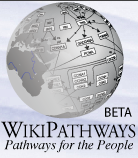
 48,086 records
48,086 records
WikiPathways is an open, collaborative platform dedicated to the curation of biological pathways.
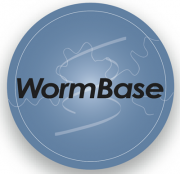
 151,387 records
151,387 records
WormBase provides anatomical and genetic information of C. elegans and related research nematodes. The GeneExprLoc view shows the localization of gene expression in C. elegans anatomy.

 515,515 records
515,515 records
WormBase provides anatomical and genetic information of C. elegans and related research nematodes. This Worm:VariantPhenotypes view curates the relationship between an allele and a phenotype, where the allele can be a genetic or RNAi-induced change.

 28,611 records
28,611 records
WormBase provides anatomical and genetic information of C. elegans and related research nematodes. This WormGenotypes view shows C. elegans strains, including those from the Caenorhabditis Genetics Center (CGC), being mapped to WormBase genotypes, genes, and alleles.

 527 records
527 records
WU-Minn HCP released behavioral and 3T MR imaging data from over 500 healthy adult participants with 14 subjects also scanned in resting-state MEG (rMEG) and task MEG (tMEG). This view includes the publicly available data from 500 subjects. You must obtain credentials from the HCP site to view the rest of the data.

 806 records
806 records
XNAT contains cross-sectional MRI data in young, middle aged, nondemented and demented older adults submitted by the Open Access Series of Imaging Studies (OASIS) project and is freely available to the research community.

 159 records
159 records
The Extensible Neuroimaging Archive Toolkit is an open-source imaging informatics platform designed to facilitate management and exploration of medical imaging and related data.

 27 records
27 records
Yale Protein Expression Database (YPED) is an open source system for storage, retrieval, and integrated analysis of large amounts of data from high throughput proteomic technologies.

 1,748 records
1,748 records
Yuste's laboratory attempts to reverse-engineer the cortical microcircuit using brain slices from mouse neocortex as the experimental preparation to present reconstructions of cortical neurons. Note: the Yuste's laboratory website is currently experiencing some technical issues and the links to the source may not work functionally.

 9,149 records
9,149 records
The Zebrafish Model Organism Database (ZFIN) contains gene and gene expression data from zebrafish research strains. This ExtrinsicGenotypes view provides the results the of application of morpholino reagents in an experimental context. These are extracted from the ZFIN-supplied experimental conditions, and linked to the targeted genes and associated properties following the GENO genotype ontology model as developed by the Monarch Initiative.

 26,514 records
26,514 records
The Zebrafish Model Organism Database (ZFIN) contains gene and gene expression data from zebrafish research strains. This FishEffectiveGenotypes view provides the resulting combination of intrinsic (organismal) and extrinsic (experimental) genotype. These are extracted and built from ZFIN genotype-phenotype data following the GENO genotype ontology model as developed by the Monarch Initiative.

 166,229 records
166,229 records
The Zebrafish Model Organism Database (ZFIN) contains gene and gene expression data from zebrafish research strains. This Gene Expression view provides information about the localization of gene expression in Zebrafish anatomy.


 123,248 records
123,248 records
The Zebrafish Model Organism Database (ZFIN) contains gene and gene expression data from zebrafish research strains.

 93,276 records
93,276 records
The ZFIN Genotype-Phenotype View contains Genotype-to-Phenotype mappings in ZFIN, with experimental-environmental context. This Genotype-Phenotype view is a combination of intrinsic (organismal) and extrinsic (experimental/morphant) genotypes, in the context of environmental conditions. The effective genotypes are extracted and built from ZFIN genotype-phenotype data following the GENO genotype ontology model as developed by the Monarch Initiative.

 23,730 records
23,730 records
The Zebrafish Model Organism Database (ZFIN) contains gene and gene expression data from zebrafish research strains. This OrganismGenotypes view is a data set mapped to genotypes, genes, and alleles.
Category Breakdown
ClinicalTrials.gov: Trial List
Diabetic Complications Consortium: Animals
Diabetic Complications Consortium: Histology
Diabetic Complications Consortium: Protocols
LIPID MAPS Proteome Database: Gene
LIPID MAPS Structure Database: Compounds
NIDDK Central Repository: Data
Omics Discovery Index: Datasets
T1DBase: Human GRCh37 Variants
T1DBase: Human GRCh38 Variants
